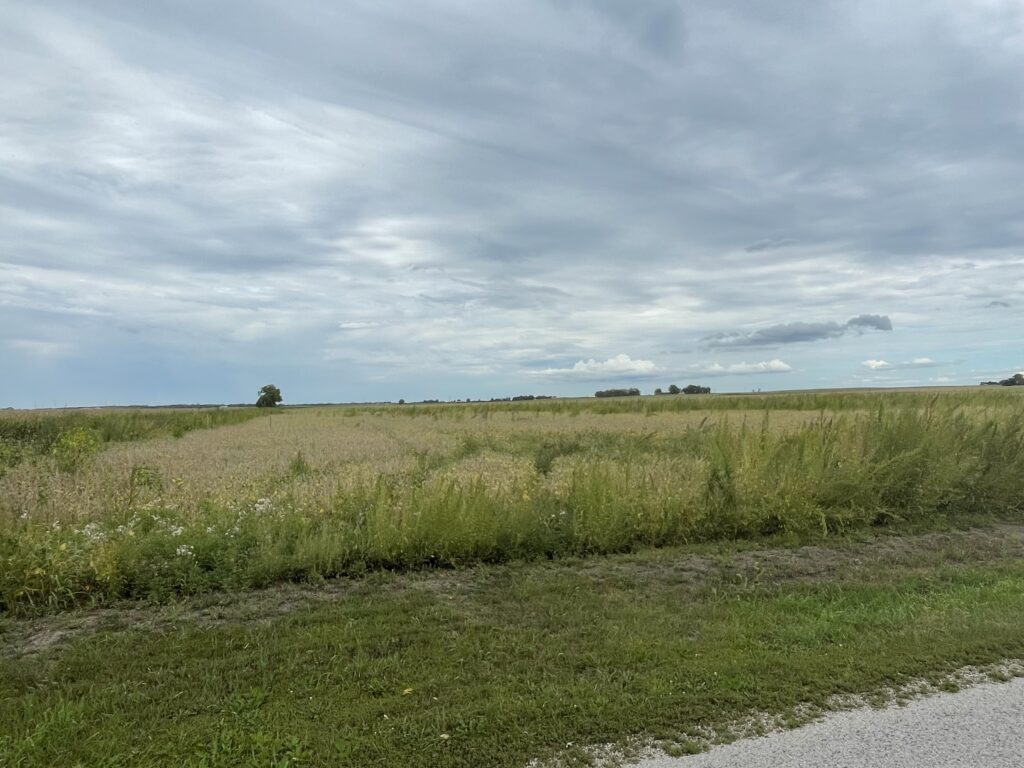First, I think it’s worth asking ourselves how we ended up in the scenario in which we are considering a rescue treatment of Liberty or glufosinate-containing herbicide to control waterhemp. Like any good agronomist, I am going to ask you to tell me more about your operation, especially when and how specific weed control plans were used that appear to have failed at controlling waterhemp.
Some questions that need to be considered with honest feedback:
1. Did we start clean from either tillage, cover crops, or spring burndown herbicide application?
2. Were effective sites of action to control waterhemp with preemergent residual herbicides utilized before soybeans emerged and then incorporated into the post-emergent herbicide pass?
-
- Possible herbicide tank mixes proven effective when combined at planting but before soybean emergence include the following herbicide groups: Group 2, 5, 14, 15.
- Then, in the post-emergent herbicide pass, were overlapping residuals utilized that might include the following herbicide groups: Group 14 or 15?
3. Were full labeled rates utilized at the time of application with consideration to control waterhemp?
4. Was waterhemp targeted at 3-4 inches in total size at the time of application?
5. What adjuvants were included in the tank mix? One specific adjuvant that Liberty requires is ammonium sulfate or AMS. To overcome possible antagonisms from cations in water sources, the pH of the water must be lowered. Generally, 2-3 lbs of AMS per acre will overcome this. However, it is important to have water sources tested.
6. Spray tips: Were the correct spray tips utilized to create the desired spray droplets and provide good coverage of desired weeds, such as waterhemp?
We, as producers, agronomists, and applicators, have control over all of the above questions. It’s about controlling the controllables and managing things like environmental conditions at the time of application.
Now, back to the original question, can Liberty or glufosinate-containing herbicide be considered for a rescue application in soybeans?
1. Is the soybean growth stage past R1 growth stage?
2. Will application occur within 70 days of harvest?
3. Have there already been 2 applications in the crop?
4. Has 87 oz/A of Liberty already been used in the crop?
If the answer to any of these questions is “yes,” then the answer is NO! The label is a legal contract. It especially states that if any of these conditions exist, then a Liberty or glufosinate-containing herbicide application cannot occur.
Application of Liberty or glufosinate-containing herbicide after the R1 growth stage in soybeans is not concerned with knocking blooms off the plant or interfering with reproduction growth stages. It’s more about whether there is enough time to reduce herbicide residues within the plant prior to harvest. While this may not be of great concern to growers directly, growers should still be concerned because of the bigger picture. If the grain is evaluated for herbicide residues and Liberty is detected, it may prevent or be subject to government seizure, import block, or penalties. Illinois is already the leading state in the USA for raising soybeans; let’s not interfere with that reputation by allowing weeds to get out of hand, where the temptation is to spray Liberty off-label and out of compliance.
“As always, please read, understand, and follow all of the guidelines on the herbicide label!”



 and then
and then
Not sure if this is correct information on growth stage for legal application. Application timing is only before and including R1.